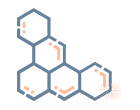Lipodystrophy Precision Panel
Lipodystrophy is a congenital or acquired disorder characterized by either complete or partial lack of adipose tissue.


Lipodystrophy is a congenital or acquired disorder characterized by either complete or partial lack of adipose tissue. In some of these disorders, there is also the apparent accumulation of fat in other regions of the body. The primary defect is the loss of functional adipocytes, leading to ectopic steatosis, insulin resistance and severe dyslipidemia. The main cause of insulin resistance is the fact that the excess energy cannot be stored in adipose tissue, which is secondary to either the near total lack of adipocyte expandability in patients with generalized lipodystrophy, or a limited capacity to expand in partial lipodystrophy.
Abnormal appearance due to the absence or abnormal distribution of subcutaneous fat is noted within the first two years of life. During childhood, these patients manifest a high appetite, accelerated linear growth and advanced bone age. The onset of protuberant abdomen due to hepatomegaly caused by fatty infiltration of the liver is also common, which leads to severe cirrhosis. The mode of inheritance is autosomal recessive.
The Igenomix Lipodystrophy Precision Panel can be used to make an accurate and directed diagnosis ultimately leading to a better management and prognosis of the disease. It provides a comprehensive analysis of the genes involved in this disease using next-generation sequencing (NGS) to fully understand the spectrum of relevant genes involved.
The clinical utility of this panel is:
Rinaldo, P., Matern, D., & Bennett, M. (2002). Fatty Acid Oxidation Disorders. Annual Review Of Physiology, 64(1), 477-502. doi: 10.1146/annurev.physiol.64.082201.154705
Knottnerus, S., Bleeker, J. C., Wüst, R., Ferdinandusse, S., IJlst, L., Wijburg, F. A., Wanders, R., Visser, G., & Houtkooper, R. H. (2018). Disorders of mitochondrial long-chain fatty acid oxidation and the carnitine shuttle. Reviews in endocrine & metabolic disorders, 19(1), 93–106. https://doi.org/10.1007/s11154-018-9448-1
Wanders, R., Vaz, F. M., Waterham, H. R., & Ferdinandusse, S. (2020). Fatty Acid Oxidation in Peroxisomes: Enzymology, Metabolic Crosstalk with Other Organelles and Peroxisomal Disorders. Advances in experimental medicine and biology, 1299, 55–70. https://doi.org/10.1007/978-3-030-60204-8_5
Rinaldo, P., Matern, D., & Bennett, M. J. (2002). Fatty acid oxidation disorders. Annual review of physiology, 64, 477–502. https://doi.org/10.1146/annurev.physiol.64.082201.154705
Roe, C., & Mochel, F. (2006). Anaplerotic diet therapy in inherited metabolic disease: Therapeutic potential. Journal Of Inherited Metabolic Disease, 29(2-3), 332-340. doi: 10.1007/s10545-006-0290-3
Olpin S. E. (2013). Pathophysiology of fatty acid oxidation disorders and resultant phenotypic variability. Journal of inherited metabolic disease, 36(4), 645–658. https://doi.org/10.1007/s10545-013-9611-5